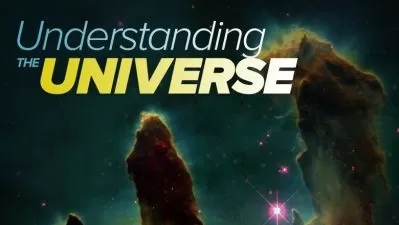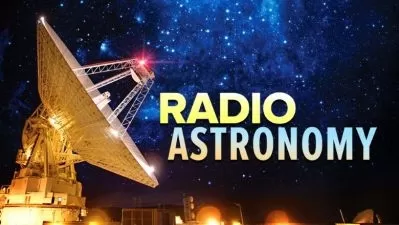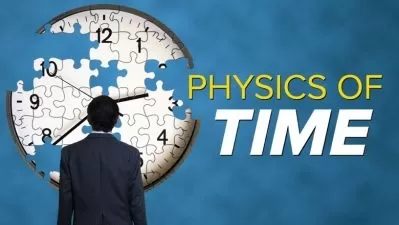The Evidence for Modern Physics: How We Know What We Know
Don Lincoln
11:54:21
Description
The discoveries of modern physics are so astounding and counterintuitive that they almost defy belief. Yet ample evidence shows that such baffling theories as quantum mechanics and general relativity must be correct, if only because some of today’s key technologies wouldn’t work without them. Indeed, there is no end to the bizarre findings of physics, for example:
- Mass Is Not What You Think. We think of mass as the amount of matter in something. But it’s much stranger than that. According to theorist Peter Higgs and others, an energy field permeates the universe, giving mass to a certain class of particles. Those particles that don’t interact with the field, such as photons, have no mass.
- Quantum Foam. Empty space may seem empty by definition. But that is an illusion. The law of conservation of energy is suspended over tiny distances and periods of time, with “virtual” particles popping in and out of existence in a chaotic quantum foam.
- The Unobservable Universe. What lies beyond the most distant bounds of the observable universe? Since light from that region can never reach us, we should never know. Yet scientists have deduced from the subtle signature of the Big Bang that the entire universe must be at least 500 times wider than what we can see.
When faced with such claims, it’s only natural to ask: How can anyone possibly know this? But as scientists have done since the earliest days of their profession, they evaluate the evidence, frame hypotheses, conduct experiments, and weed good ideas from bad as they close in on what must be the truth.
In a riveting course designed to give non-scientists the matchless experience of scientific discovery and deep understanding, The Evidence for Modern Physics: How We Know What We Know takes you through the most remarkable insights of contemporary physics, showing why physicists believe what they do.
Using minimal math, noted particle physicist and educator Dr. Don Lincoln of Fermi National Accelerator Laboratory covers fundamental concepts and advances in physics since the 19th century. In 24 exhilarating half-hour lessons, he explains how we know things that seem unknowable—from the speed of light to the structure of atoms, from the composition of stars to the age of the universe.
Clear, engaging, and witty, Dr. Lincoln also has world-class experience in this subject. He was on the team that discovered the Higgs boson in 2012, helping to explain the mystery of mass. Earlier, he was a co-discoverer of the top quark, the last of the quark family of elementary particles to be identified. With such an amazing history of discovery, Dr. Lincoln brings an especially fascinating perspective to this course.
Physics Masters at Work
The Evidence for Modern Physics opens your eyes to how science progresses by slow degrees punctuated by sudden leaps when a piece of data that doesn’t fit into conventional theories sparks a startling new view of reality. For instance:
- Space and Time Transformed. In the 1880s, measurements of the speed of light showed it was always the same, regardless of the speed of the source. Two decades later, Albert Einstein postulated that the speed of light is constant; it is space and time that stretch and contract. He developed this idea into his theory of relativity.
- Wave or Particle? The nature of light seemed solved in the early 1800s, when Thomas Young showed it behaves as a wave. A century later, inconsistencies in the wave theory led Max Planck to propose that light energy comes in packets, or quanta. This unexpected idea unleashed the quantum revolution that has remade physics.
- Microwave Mystery. In 1965, Arno Penzias and Robert Wilson were calibrating a radio telescope when they noticed persistent, faint microwave static in all directions. After ruling out all possible sources of noise, they concluded they had discovered the background radiation from the Big Bang, lending support to a controversial theory.
You also learn about recent breakthroughs, as well as attempts to deal with as-yet-unsolved puzzles. These stories may be familiar to you from the media, but Dr. Lincoln takes you deeper than any feature story to chart the many lines of inquiry that are used to crack scientific mysteries. The cases you investigate include:
- The major methods devised to pinpoint thousands of planets orbiting stars in our neighborhood of the Milky Way Galaxy;
- The hunt for supermassive black holes at the heart of galaxies, including our own, and the remarkable image of one of these monsters;
- The first detection of gravitational waves, generated by colliding black holes in a distant galaxy—an event now seen multiple times;
- The enigma of dark matter, which is five times more prevalent than ordinary matter, although no one yet knows what it is;
- The hypothesized force called dark energy that is causing the universe to expand at an accelerating rate; and
- The incredible theory of cosmic inflation, which accounts for largescale properties of the universe, but is still awaiting proof.
“It Won’t Be a Mystery Anymore”
Dr. Lincoln devotes a lesson to defusing concerns that today’s high-energy particle accelerators might accidentally create a particle, an unusual vacuum state, or a miniature black hole that could destroy the Earth or even the universe. He details the physics behind these worries and then explains why such scenarios are impossible. “It turns out that we can know, with 100% certainty, that there is no danger of any kind,” he says.
He also punctures a number of widely held but fallacious ideas, such as the human mind having a special role in quantum mechanics, or a singularity with zero size and infinite density lying at the heart of a black hole. “When infinities show up in physics calculations” he notes, “it means that you’ve believed your math beyond the realm where it actually describes reality.”
In this way, The Evidence for Modern Physics teaches you how physicists think: abstractly; intuitively; critically; and always answering to data, data, data. The history of science is littered with discarded ideas that are beautiful and ingenious, but also wrong. Even the best physicists go down blind alleys; Einstein is a prominent example. But if they keep at it, they usually find their way into a corridor that leads somewhere interesting, and if they are lucky, to the solution of a long-standing puzzle.
“At the end of our 12 hours together,” promises Dr. Lincoln, “you should have a pretty solid understanding of the kinds of observations and evidence that make my colleagues and me come to the conclusions that we do. It won’t be a mystery to you anymore.”
More details
User Reviews
Rating
Don Lincoln
Instructor's CoursesDon Lincoln is a Senior Scientist at Fermi National Accelerator Laboratory (Fermilab). He is also a Guest Professor of High Energy Physics at the University of Notre Dame. He received his Ph.D. in Experimental Particle Physics from Rice University.
Dr. Lincoln’s research has been divided between Fermilab’s Tevatron Collider, until its close in 2011, and the CERN Large Hadron Collider, located outside Geneva, Switzerland. The author of more than 1,000 scientific publications, his most noteworthy accomplishments include serving on the teams that discovered the top quark in 1995 and confirmed the Higgs boson in 2012. He is a fellow of the American Physical Society and the American Association for the Advancement of Science.
His writing at a popular level includes many articles as well as four books: Understanding the Universe, The Quantum Frontier, The Large Hadron Collider, and Alien Universe. His enthusiasm for science education earned him the 2013 Outreach Prize from the High Energy Physics Division of the European Physical Society.
Dr. Lincoln has given hundreds of lectures on four continents to a broad range of audiences. He is a blogger for the website of the PBS television series NOVA, and he also writes a weekly column for the online periodical Fermilab Today.

The Great Courses
View courses The Great Courses- language english
- Training sessions 25
- duration 11:54:21
- English subtitles has
- Release Date 2023/08/19











